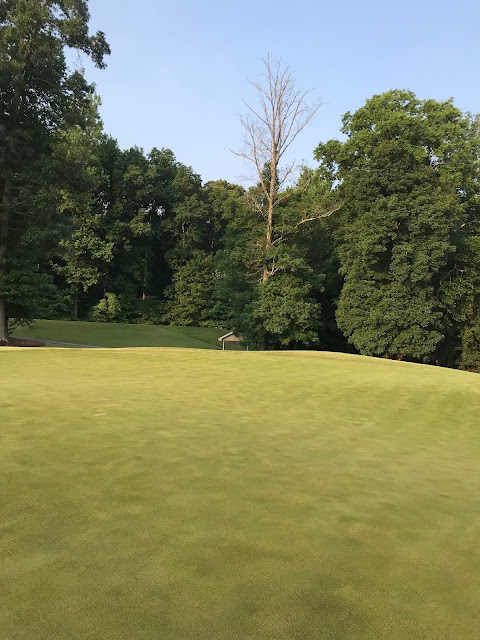Over the past two weeks we have taken the opportunity given the dry weather to aerify the tee boxes. Aerification is an important process in all turf management because it helps to add pore space to the soil profile, reduce the thatch build up which accumulates all year long, and even out the surface of the grass to make it smooth. When we do this tee box aerification we punch half inch diameter holes in the turf and remove a plug. Once the plugs are cleaned off the tee we topdress heavily with sand to fill the holes and improve uneven areas on the tee box surface. The sand will be brushed into the holes to ensure the even distribution. The last step in the aerification process is to add amendments and fertilizer to the tee boxes to enhance the nutrient levels of the soil profile. This fertilizer also helps to speed up the recovery process by encouraging rapid growth. Here are a few pictures to help illustrate exactly how we do the aerification:
Here is a picture showing the before and after of the aerification. On the right side of the picture is the tee surface before being punched with holes. The left side of the picture shows all the plugs removed sitting on top of the surface.
This close up picture shows the plugs a little better as they come out of the machine. We will blow the plugs off the tees and pick them up behind the aerifier before topdressing with sand. This helps to ensure the holes are open and ready for the sand to fill them up!
Here is an up close look at the"aerification tines" as they are called. These tines are hollow at the bottom and have one side missing because the are "side-eject" tines, or shoot the little plugs of grass out the sides. Each time the machine punches them into the grounds, the new plug pushes the rest of the material left in the tine out and onto the ground.
Here is the view of the tee surface looking straight down after a week of recovery. The bermuda grass is growing very rapidly right now and makes for a very short recovery. Within 3 weeks it will be hard to see we did anything to the tees, but the benefit to the soil profile will be felt for a long time by the turf!
Looking at the tees overall it is easy to see some sand that still remains, but for only 1 week after punching holes we have seen a very quick recovery!















